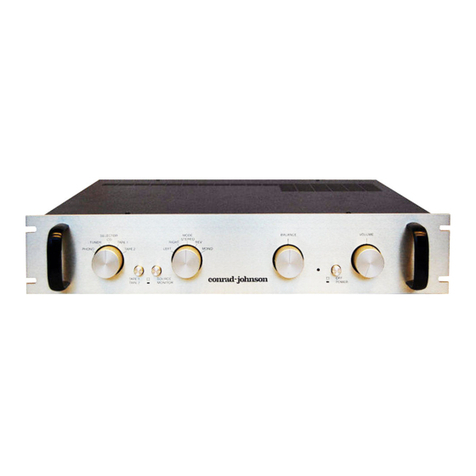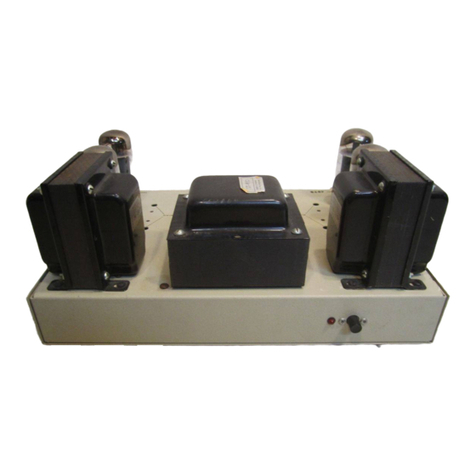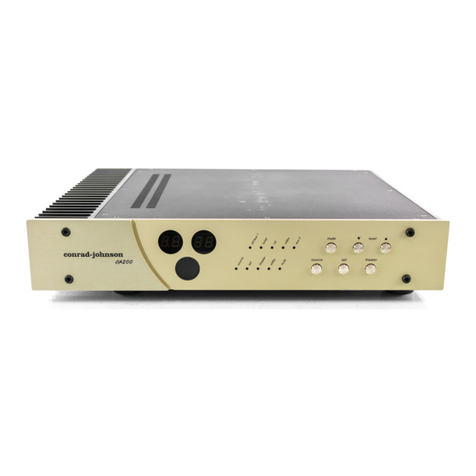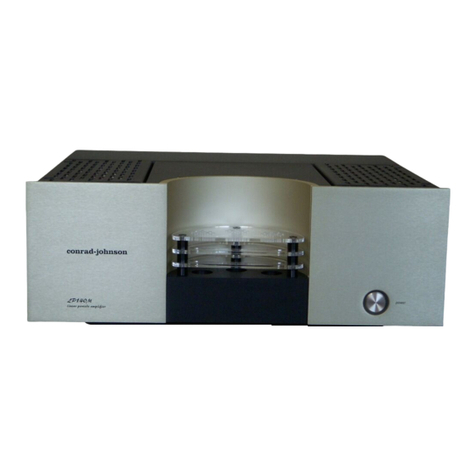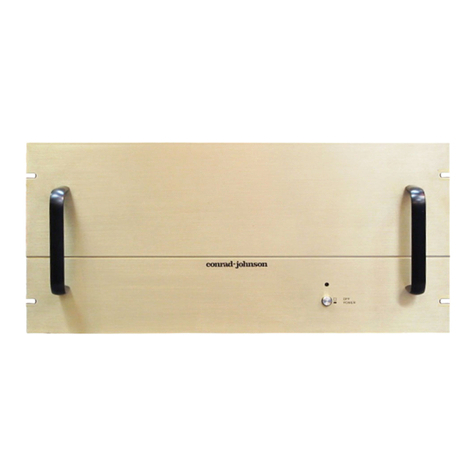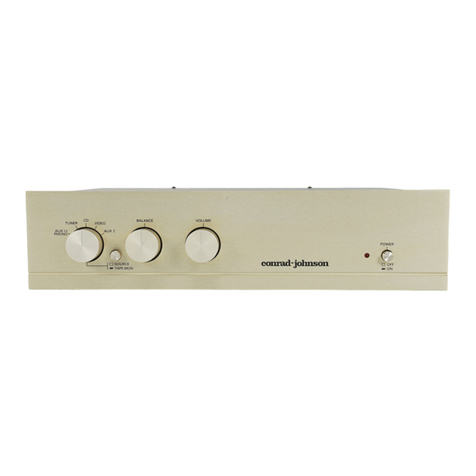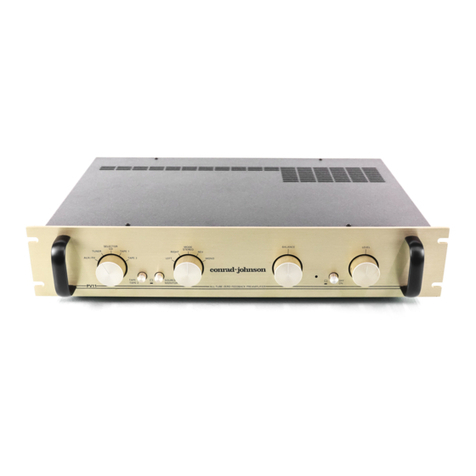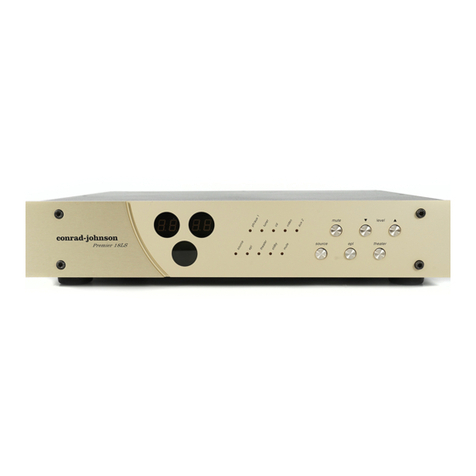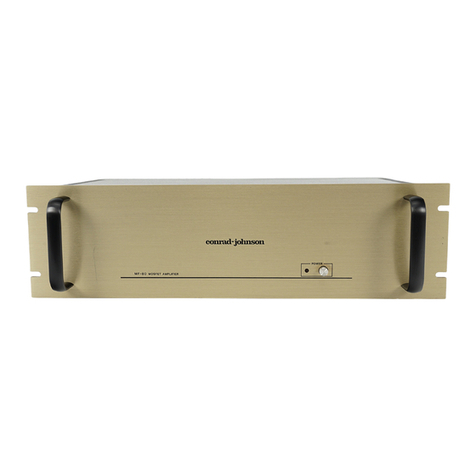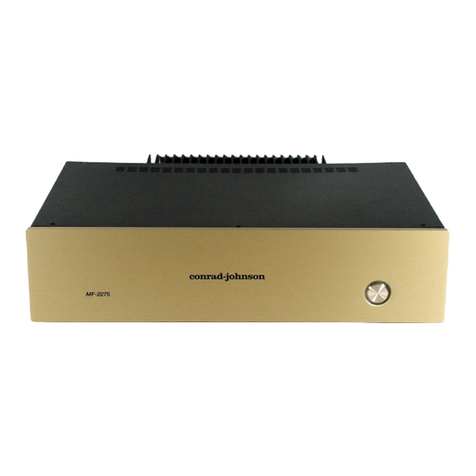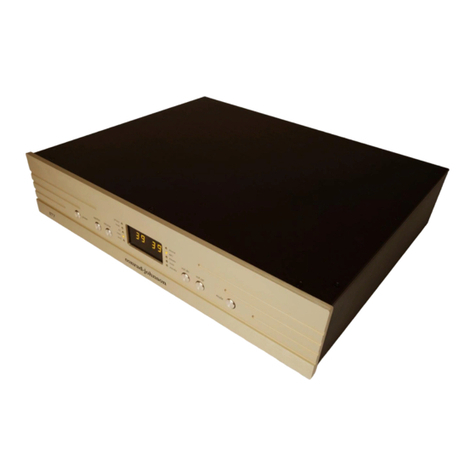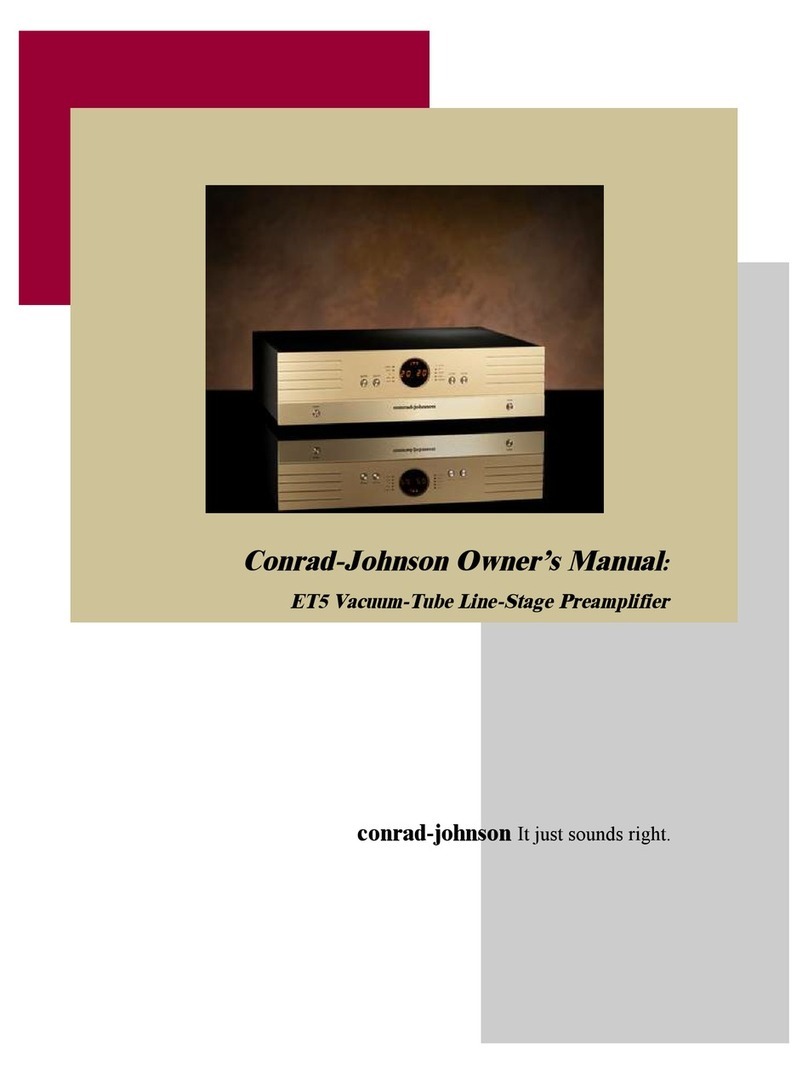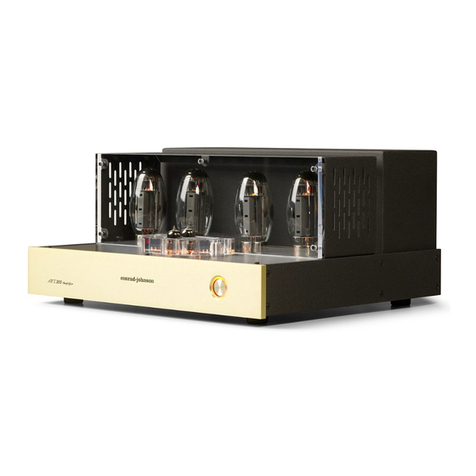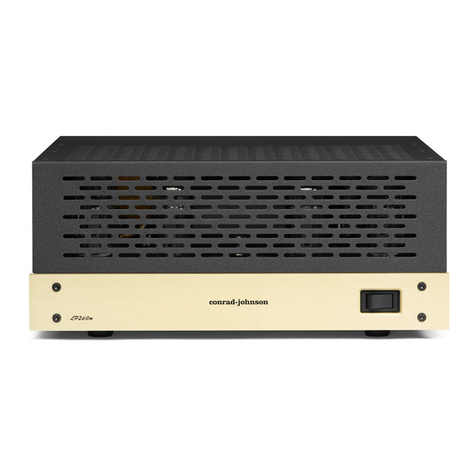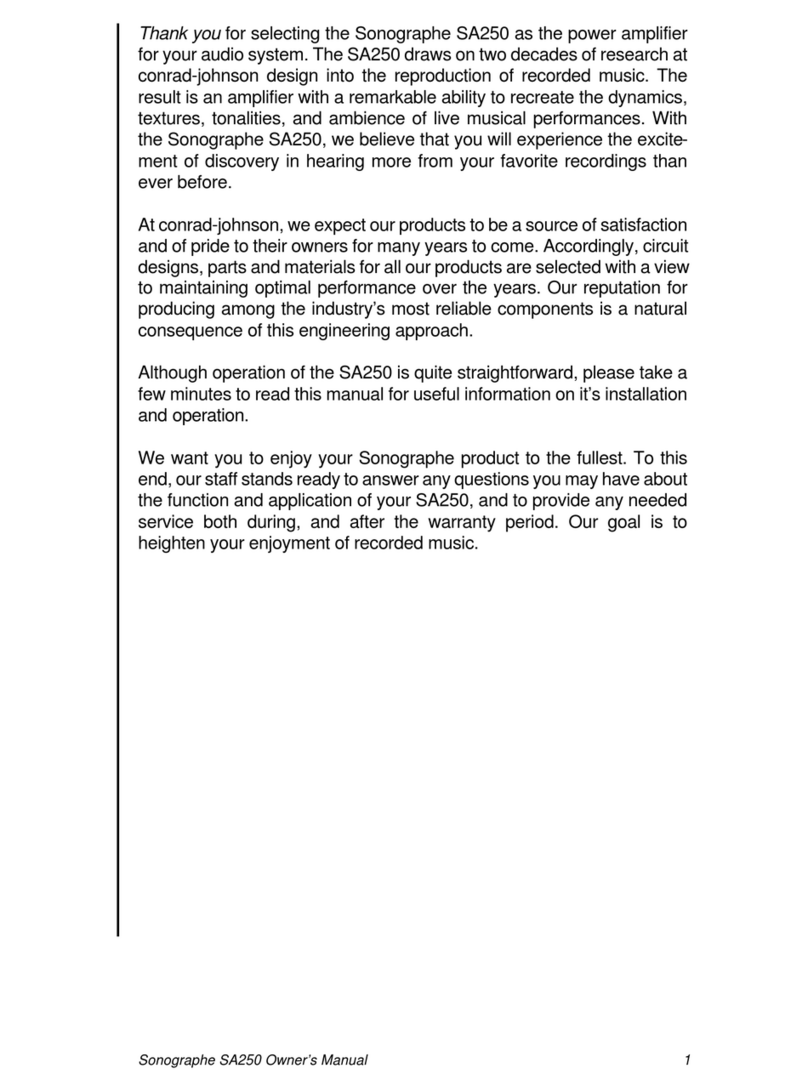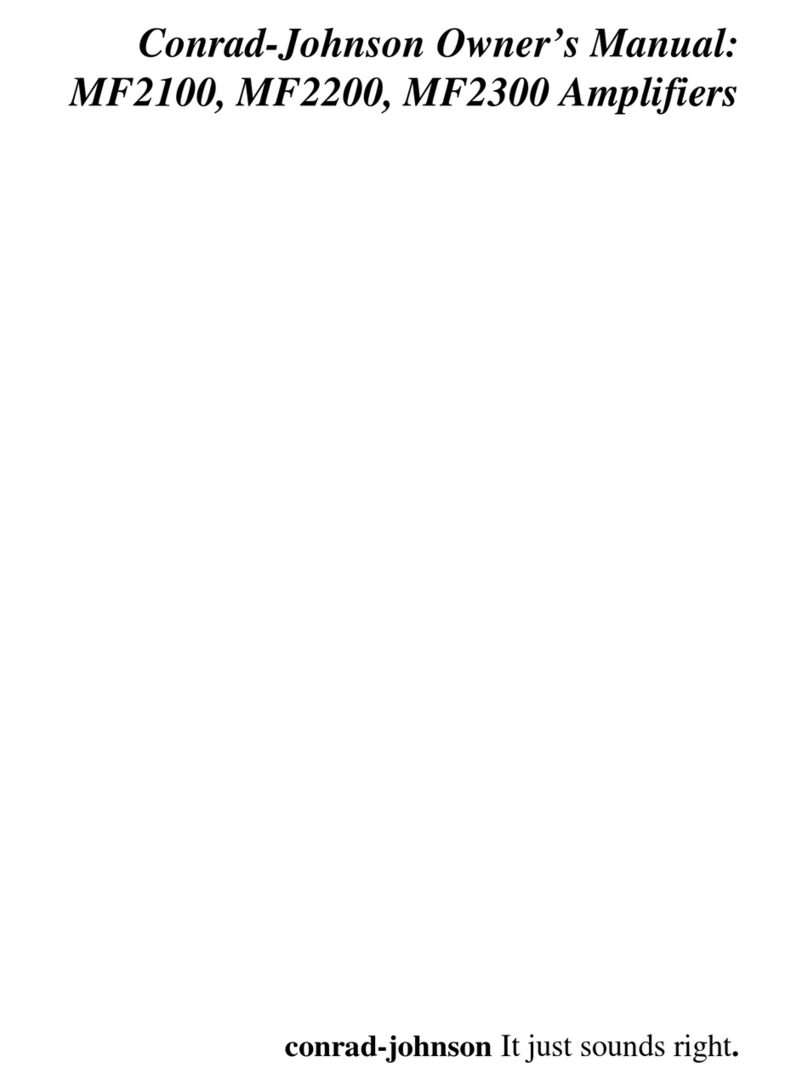
ACT2 Owner’s Manual 4
nstallation
The first step in preparing your ACT2 preamplifier for use is to
install the vacuum-tubes. To do this, remove the top plate of the
tube guard by removing the four socket screws using the supplied
hex-head screwdriver. The ACT2 uses four type 6N30P tubes.
After checking the pin orientation, insert one tube in each tube
socket. Next, fit two of the included silicone rubber rings over each
tube, spaced at roughly 1/3 and 2/3 distances. These rings will
minimize the effects of air-borne microphonics on the tubes.
Finally, reinstall the tube guard.
The next step is to remove the transit screws. To minimize
microphonics, the critical audio circuits in the ACT2 are on a sub-
chassis that is mounted to the main chassis with flexible isolation
mounts. To prevent damage during shipping, this assembly is
secured by four screws through the bottom of the chassis. These
transit screws can be readily identified as the four silver screws on
white nylon washers. Before installing your ACT2, remove these
screws to release the suspension. Save the screws to re-use if it
becomes necessary to ship your ACT2.
Set Up
To maintain proper ventilation, mount the ACT2 horizontally on a
flat, hard surface, and take care that the ventilation holes in the
bottom are unobstructed. Allow at least two inches of clearance
above the unit and keep the cabinet or shelf open at the back.
All ACT2s sold in the United States are configured for operation on
a 60Hz ac power line producing between 108 and 126 volts. Export
versions of the ACT2 will have the correct operating voltage and
frequency clearly marked on the back panel of the unit, near the ac
power cord. In all cases, the actual line voltage should be within +
5/-10% of the nominal rated voltage.
Electromagnetic Interference (EMI)
Considerable care has been taken in the design of the ACT2 to
minimize its susceptibility to radio frequency interference and other
forms of EMI. Choice of materials, physical layout, grounding
practice, and power supply design have all been specified with a
view to reducing the impact of electromagnetic fields on the
performance of this unit. At the same time, however, our primary
